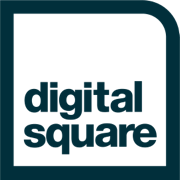About Global Goods
What are Global Goods?
Digital Square Global Goods are digital health tools which are open source (FOSS), have no barrier to access for services or available under open content licenses etc, are supported by an anchor organization/strong community, have a clear governance structures, have been deployed at scale, are used across multiple countries, have demonstrated effectiveness, are designed to be interoperable, and are on a continuum towards sustainability for the tool/service.
When open-source software tools are configured to work together to support a functional domain (such as immunization, antenatal care, etc.) these can be described as product suites. For more information please visit our global goods guidebook.
Presence of global goods in countries
Global Goods vs DPGs
Digital Square Global Goods are a collection of Digital Public Goods that are focused on health, are impactful, scalable and adaptable to different countries and contexts, strive for interoperability and are designed for use primarily in low and middle income country (LMIC) settings.
In short, all Global Goods are Digital Public Goods, but not all Digital Public Goods are Global Goods.
For a detailed explanation please see Digital Square Global Goods and Digital Public Goods
Types of Global Goods
View our Active Global Goods here.
Software
A mature digital health software global good is software that is Free and Open Source Software (FOSS), is supported by a strong community, has a clear governance structure, is funded by multiple sources, has been deployed at significant scale, is used across multiple countries, has demonstrated effectiveness, is designed to be interoperable, and is an emergent standard application.
Services
A mature digital health service global good is service that is freely accessible (having no financial or other barrier to access), is supported by an anchor organization/strong community, have a clear governance structures, is utilized at scale, is used across multiple countries, has demonstrated effectiveness, is designed to be interoperable, and is an emergent standard service.
Content
A mature digital health content global good is a content artifact that is freely accessible (having no financial or other barrier to access) and is published under an open license, is supported by an anchor organization/strong community, serves a well bounded health domain, is utilized at scale, is used across multiple countries, has demonstrated effectiveness, and is seen as an emergent standard content artifact.
How to become a Global Good
Read more on how to become a global good here.
Shelf Readiness & Maturity Model
The term "shelf readiness" stems from the need to ensure that digital health global goods, particularly software, are ready to be deployed as stand-alone products which meet the primary data use needs of a tool. Shelf readiness aims to allow implementers and decision makers to have a higher level of confidence in the solutions as they would be well presented in their product information, ability to perform desired functions as well as interoperability workflows / metadata synchronizations and deployment aspects, to name a few areas.
Digital Square funds a maturity model baseline assessments and reassessments of global goods
Read more about Shelf Readiness.
Read more about our Maturity Model.
How Digital Square supports Global Goods
Digital Square partners with innovators and funders to increase the availability, adaptability, and maturity of high-quality software, service, and content options for countries, thereby supporting an ecosystem of choice. Find out more
The Testing Harness
Digital Square has supported the development of a test harness and testing framework that will facilitate testing the conformance of technologies to the OpenHIE Architecture specification and health and data content, as specified by WHO SMART Guidelines. This testing solution will be leveraged by anyone wanting to test compliance of digital health solutions to WHO SMART Guidelines compliance requirements and/or their own defined requirements.
